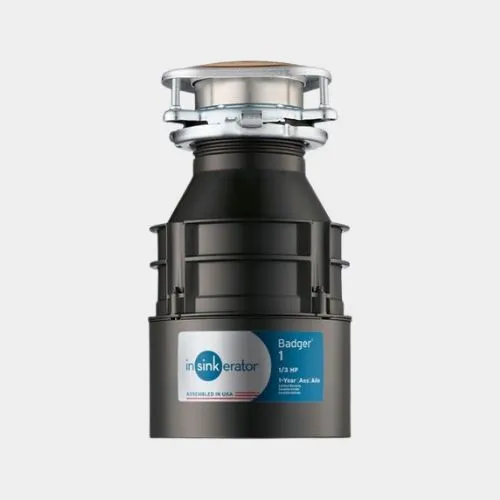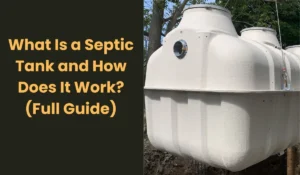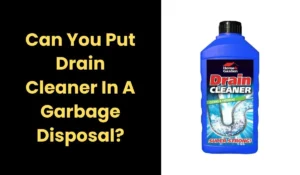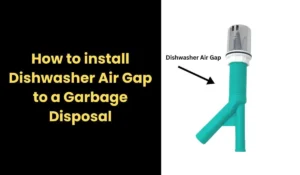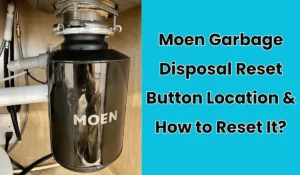Comparing 1/2 HP vs 1/3 HP Garbage Disposals: Which is Best?
Shopping for a garbage disposal is hardly the most exciting part of renovating your kitchen. But getting the horsepower right specifically choosing between a 1/3 HP and a 1/2 HP unit is the secret to avoiding frustrating clogs and that awful grinding noise. You don’t want to spend money on an appliance that’s going to jam up every time you peel a potato! The difference in cost is usually small, but the difference in how they perform daily is huge.
This guide will help and show you exactly which unit offers the best blend of power, reliability, and value for your kitchen’s needs.
Differences Between 1/3 HP and 1/2 HP Garbage Disposals
Grinding Power and Performance: 1/3 HP vs 1/2 HP
Horsepower (HP) indicates the sheer torque and capacity of the unit.
- The 1/2 HP motor, conversely, is engineered for medium-duty use. It provides sufficient power to handle most everyday mixed kitchen waste, including vegetable peels and the occasional small bone. This increased capability makes the 1/2 HP unit far more versatile and forgiving in a typical residential setting.
- The 1/3 HP unit is strictly suitable for soft organic matter and should not be used for grinding items such as animal bones or tougher fibrous waste. Attempting to process items beyond its light-duty rating will inevitably lead to clogs and motor strain.
RPM and Torque
While horsepower defines total output, the Rotations Per Minute (RPM) is the crucial factor determining the quality and speed of the grind. Higher RPM ensures that food is quickly broken down into fine particles, minimizing the risk of clogs and back-ups down the drain pipes.
Typical 1/2 HP units report grinding speeds exceeding 2,600 RPM, allowing the motor to achieve maximum torque quickly for swift and efficient processing. In contrast, 1/3 HP units typically operate at slightly lower speeds, often around 2,400 RPM or less. This reduction in speed, combined with lower torque, makes the unit more susceptible to being overwhelmed by a sudden influx of food scraps.
Induction Motors vs. Permanent Magnet Motors
A significant factor explaining the performance divergence is the motor technology. Lower-end 1/3 HP disposals often rely on traditional induction motors, while many high-quality 1/2 HP models integrate Permanent Magnet (PM) motors.
PM motors offer superior efficiency, instantly achieving high speed and torque. This instant twisting power is highly effective at clearing nascent jams and ensuring smooth startup, even when minor resistance is present. Induction motors, when encountering a heavy load, rely on a separate starting winding that doesn’t possess the high torque needed for jamming situations, causing the unit to stall more frequently. The performance advantage of the 1/2 HP category often comes from this qualitatively better PM motor architecture.
Clogging and Grind Quality
The 1/3 HP unit’s difficulty in consistently processing denser or tougher food means that these items must often be scraped into the trash, limiting the disposal’s usefulness. Furthermore, when 1/3 HP units struggle, large particles may bypass the blades, leading to clogs within the disposal or further down the drain pipes.
The 1/2 HP unit offers greater forgiveness in handling mixed waste, resulting in a finer and faster grind. This capability is why the 1/2 HP model is considered the minimum required specification for a typical family kitchen.
Grind Chamber Capacity
Durability is intrinsically linked to the material of the grinding chamber and components.
- Lower-cost 1/3 HP models often utilize galvanized steel components. While functional, galvanized steel is susceptible to rust and corrosion over time, which can eventually lead to leaks and the need for costly replacement.
- Higher-quality 1/2 HP units often feature corrosion-resistant materials such as composite chambers or stainless steel grinding elements. Choosing a unit constructed with superior materials ensures a significantly longer operational lifespan, protecting the consumer against the common failure mechanism of rust and leaks.
| Feature | 1/3 HP (Typical) | 1/2 HP (Typical) |
|---|---|---|
| Household Size | 1–2 People, Light Usage | 2–4 People, Medium Usage |
| Grinding Speed (RPM) | ~1,750 – 2,400 RPM | ~2,500 – 2,600+ RPM |
| Typical Motor Type | Induction or Standard PM | Permanent Magnet (Preferred) |
| Durability Materials | Galvanized Steel (Prone to Rust) | Composite or Stainless Steel |
| Key Implication | Suitable for light waste only; may jam under heavy load. | Handles mixed waste better; fewer clogs and longer lifespan. |
Durability and Warranty
A properly sized and maintained garbage disposal should last approximately 10 to 12 years. The warranty period is a key economic indicator of the manufacturer’s expected durability.
- Lower-tier 1/3 HP units frequently carry shorter warranties, sometimes as brief as one to three years. This often reflects the manufacturer’s anticipation that cheaper components may fail sooner under moderate stress.
- Reputable 1/2 HP models commonly offer warranties spanning three to five years, or even longer. This extended warranty signals a higher confidence in the unit’s longevity, suggesting a lower probability of unexpected replacement costs.
Durability and Warranty as a Measure of Quality
A properly sized and maintained garbage disposal should last approximately 10 to 12 years. The warranty period is a key economic indicator of the manufacturer’s expected durability.
- Lower-tier 1/3 HP units frequently carry shorter warranties, sometimes as brief as one to three years. This often reflects the manufacturer’s anticipation that cheaper components may fail sooner under moderate stress.
- Reputable 1/2 HP models commonly offer warranties spanning three to five years, or even longer. This extended warranty signals a higher confidence in the unit’s longevity, suggesting a lower probability of unexpected replacement costs.
Energy and Water Consumption
While disposal usage is intermittent and energy consumption is minor overall (typically less than 1 kWh per month), efficiency favors the 1/2 HP unit. PM motors inherently require less electricity on a per-minute basis. Moreover, because they operate faster and grind more quickly, they utilize less water and less electricity overall during a grinding cycle compared to a slower induction unit that might struggle to clear the waste.
| Factor | 1/3 HP Range | 1/2 HP Range | Long-Term Consideration |
|---|---|---|---|
| Price (Common Models) | $74 – $129 | $114 – $172 | Small initial gap supports the long-term value of 1/2 HP. |
| Standard Warranty | 1 – 3 Years (Shorter) | 3 – 5+ Years (Longer) | Longer warranty reflects higher-quality components and greater durability. |
| Clog/Reset Frequency | Higher (Frustration Cost) | Lower (Reliability Benefit) | Reduced maintenance saves time, effort, and potential plumber costs. |
Popular 1/3 HP Garbage Disposals
Popular 1/2 HP Garbage Disposals
Which Should You pick: 1/3 HP or 1/2 HP?
We recommend you to choose 1/2 hp disposal over 1/3 hp one. But If you have a small household and don’t cook often, a 1/3 HP disposal may be sufficient for your needs. It is more affordable and will handle basic food scraps just fine. However, if you do cook regularly or prefer a model that jams less and handles tougher waste, the 1/2 HP model is the better choice.
Further Reading:
5/8 HP vs 3/4 HP Garbage Disposal
1/2 HP vs 3/4 HP Garbage Disposal
3/4 HP vs 1 HP Garbage Disposal
Conclusion
So, after looking at the RPMs, the motor types, and all those stainless steel parts, what’s the final call? The “best” disposal isn’t the most expensive one; it’s the one that’s perfectly matched to your lifestyle. If you’re a single person who rarely cooks, save the money and go with a 1/3 HP model. But for the vast majority of households anyone with a small family or someone who prepares meals regularly the 1/2 HP unit is the hands-down winner.
It’s the minimum reliable standard, offering the durability and performance that prevents those constant jams and gives you peace of mind. Investing that little bit extra upfront for the 1/2 HP will likely save you time, stress, and perhaps even a plumber’s visit down the line.
The Author

I’m Muhammad Nabeel Dar, an employee in waste management and the owner of Garbage Waste Disposal with more than four years of experience helping people to control waste and garbage disposals are the best tools to control it. Read more


